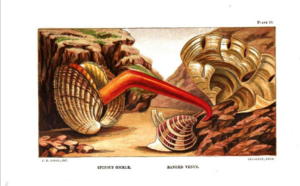About
In the nineteenth century the waters in and around Scotland must have seemed fuller than ever before. In 1809, a number of mermaid sightings were reported in Caithness, and colourful reports of Scottish merfolk circulated far and wide. The most influential marine scientist of the nineteenth century, Phillip Henry Gosse, undertook multiple lecture tours in Scotland, in Edinburgh and Dundee, and by the end of the century Sir John Murray had led a survey over 500 of Scotland’s lochs, resulting in his Bathymetrical Survey of the Fresh-Water Lochs of Scotland (1897-1909) and the recording of over 700 species.
‘Sounding Scotland’s Waters, 1800-1900: History, Literature, Science’ will unite researchers from the arts and humanities with marine scientists and oceanographers to discuss the benefits and difficulties of collaborative study of the history of Scotland’s waters. The current interest in the oceanic turn in history and literature fields means that arts and humanities researchers are increasingly turning their attention to nineteenth-century accounts and illustrations of new marine species, aquarium technologies, geographical and geological studies of coastlines, and scientific sounding reports and maps, but with no training in how to read or interpret such documents. Equally, seminal nineteenth-century works of marine science, such as Philip Henry Gosse’s illustrated A Year at the Shore (1865), which includes discussion of cockle beds in the Hebrides, often use poetic imagery and literary metaphors to describe marine species.
Through a series of workshops and online conversations, the project aims to help arts and humanities researchers share their archival skills and expertise in text and image analysis with marine scientists, and to help marine scientists share their expertise and knowledge of water properties, species behaviour, and marine ecosystems with arts and humanities researchers. Together we will explore and establish an interdisciplinary context for understanding the cultural and scientific impacts of new sounding technologies and marine species collection and study in nineteenth-century Scotland.
The project activities will focus on answering three key questions:
1. What channels of connection existed between creative, cultural, and scientific engagements with the sea in Scotland in the nineteenth century?
2. What is the relationship between mythical and folkloric belief surrounding the Scottish seas in the nineteenth century, and the development of nineteenth-century marine science?
3. How, and in what formats, can current arts and humanities and STEMM researchers collaborate effectively in order to bring the histories of the Scottish seas into public view?
